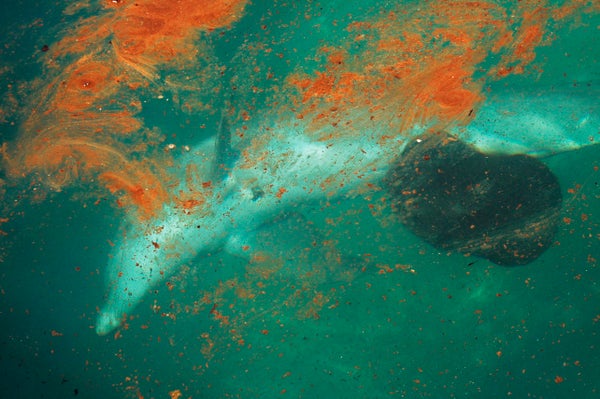This article was published in Scientific American’s former blog network and reflects the views of the author, not necessarily those of Scientific American
By the time Neil Armstrong took his first step on the moon 50 years ago last month, we arguably knew more about space than we did about some of the most iconic and awe-inspiring marine animals on Earth, such as the killer whale. As we commemorate the success of that seemingly impossible, history-changing landing, we should take a moment to ponder the enormous resources that went into accomplishing that goal and consider pouring as much or more effort into understanding our oceans.
In the 1960s, the majesty and seemingly endless expanse of the oceans were just beginning to be revealed to the public through amazing underwater footage that appeared on television. Growing up during this era, I benefited from such early media exposure and from spending endless hours exploring the sand, surf, jetties and tide pools of the beaches near my childhood home. My intrigue about the oceans led me down the path of scientific and medical discovery, but I never imagined that dire predictions of environmental degradation, overpopulation and climate change would become so urgent in my lifetime.
Sadly, those truths are unavoidable now. The fate of humans and all other species on Earth are inextricably linked to the health of our oceans: home to 50 to 80 percent of all life on the planet. Yet despite our dependence on this ecosystem, in the U.S., we as a country direct only a small portion of our resources toward understanding and improving our relationship with this vast, unexplored wonder.
On supporting science journalism
If you're enjoying this article, consider supporting our award-winning journalism by subscribing. By purchasing a subscription you are helping to ensure the future of impactful stories about the discoveries and ideas shaping our world today.
In all the recent chatter about a return to the moon, missions to Mars and even the development of a Space Force, almost nothing is heard about efforts to explore and potentially colonize the oceans—a reality we may be forced to experience as the oceans rise to colonize us instead. Today our government funds around $20 billion in space exploration, while ocean and weather research receive approximately a quarter of that funding. Meanwhile, in the private sector, a dismal 1 percent of contributions fund ocean sustainability.
Despite the obvious limitations, researchers keep chipping away at breaking the ocean barrier. As a marine biologist, scientist and veterinarian, I have had the joy and good fortune to pursue a 30-plus-year career working toward understanding the basic biology of multiple marine and terrestrial species living at zoological facilities around the world.
With a team at SeaWorld, I built a species-preservation laboratory dedicated to defining basic reproductive biology among cetaceans, including belugas, bottlenose dolphins and Pacific white-sided dolphins, among others. The results of our efforts have led to a groundbreaking understanding of their diverse reproductive biology and the development of assisted reproductive technologies, such as artificial insemination and sperm sorting, that can be integrated into wild-population conservation strategies around the globe. In fact, we have collaborated with other zoological institutions on developing these same assisted reproductive techniques to conserve terrestrial species as well, notably Asian and African elephants, black, white and greater one-horned rhinoceroses, and the Eld’s deer.
In addition to the lab, in the last year alone, my colleagues, peers and I have pioneered crucial research to help monitor, clinically assess and diagnose the health of several marine species—particularly the critically endangered population of killer whales off the coast of the Pacific Northwest. From working with the National Oceanic and Atmospheric Administration to examine the degree by which industrial toxins (mainly chlorinated hydrocarbons) and organophosphate pesticides transfer from mother to calf through milk to establishing, for the first time, what the medical physiology of a healthy whale should look like, our efforts could not have been accomplished or started without the direct commitment and financial support of SeaWorld. Imagine how much more could be accomplish if we, as a society, directed just a fraction of our enthusiasm for space exploration toward probing our oceans.
Species are becoming extinct at an ever accelerating rate. Dolphin, porpoise, killer whale and shark populations, all sentinels of the oceans, are disappearing. Despite our efforts, the task at hand is huge, and we cannot do it alone. We need to unite the next generation to strive for a world in which a thriving oceanic population of animals and plants is living in balance with the humans who enjoy it so much. Just as space exploration has helped define humanity’s place in the universe, so ocean research is critical to ensuring we and all other species still have a home on Earth.
